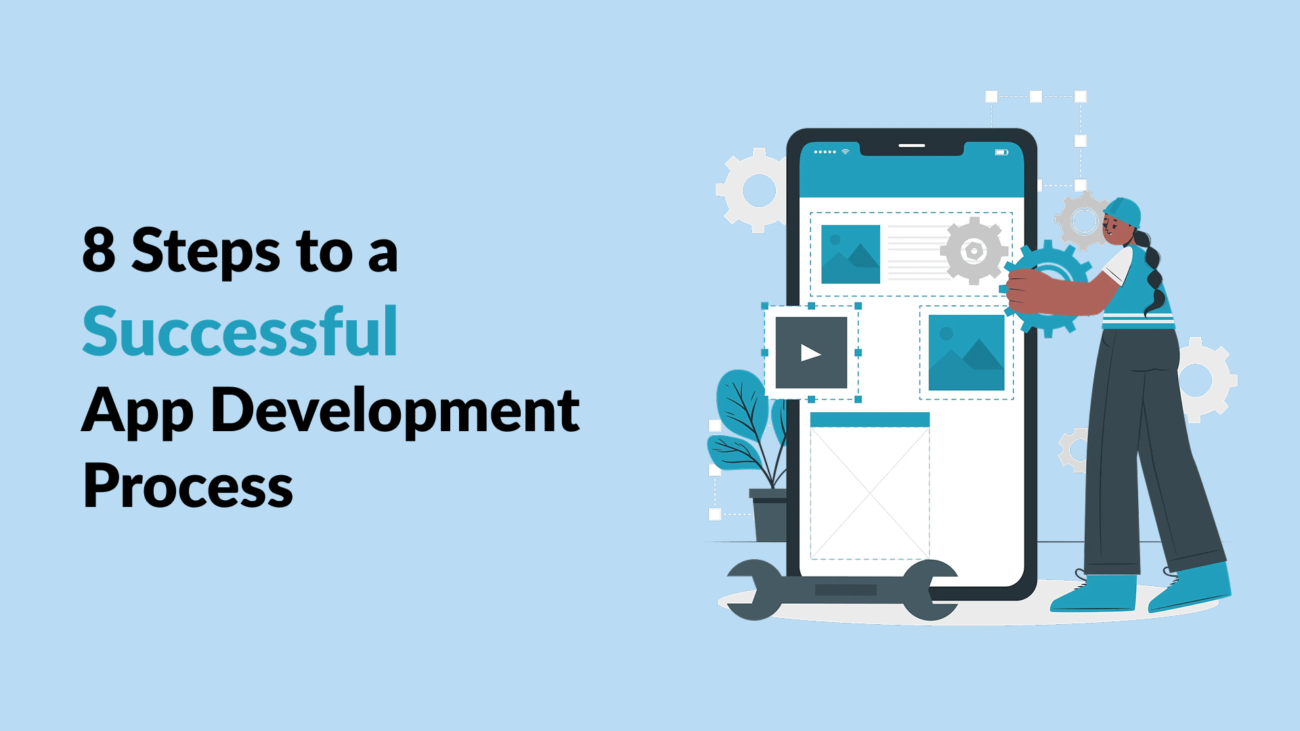In today’s fast-paced digital world, the app development process is no longer just a tech team’s responsibility -it’s a strategic business move. Whether you’re a startup founder or an enterprise leader, understanding the steps behind a successful app can save time, money, and headaches. This guide outlines eight essential steps for ensuring your app development journey leads to success.
Step 1: Define Your Goals and Target Audience
The foundation of any successful app development process begins with clearly defined goals. Ask yourself:
- What problem does the app solve?
- Who is your target audience?
- What platforms will your audience use?
The clearer your objectives, the easier it is for designers, developers, and marketers to create an app that truly resonates. By understanding your ideal user’s pain points and preferences, you lay the groundwork for an app that provides real value and engagement.
Pro Tip:
Create user personas and define user journeys to guide every future development decision.
Step 2: Conduct Thorough Market Research
Before diving into code or design, research your competition. This includes:
- Identifying existing apps in your niche
- Analyzing their features, reviews, and ratings
- Pinpointing gaps you can fill
Market research informs your app development process and helps validate your concept. It can also inspire new features and give insight into user expectations.
Expert Insight:
Use tools like App Annie or Sensor Tower to get app performance data and market trends.
Step 3: Plan the App’s Features and Functionalities
Now that you know what your users want, it’s time to plan what your app will do.
Start with a Minimum Viable Product (MVP)—a version of your app with just enough features to satisfy early adopters and gather feedback. Outline:
- Core functionalities
- User interface (UI) and experience (UX)
- Backend infrastructure
This focused planning stage ensures your app development process stays on track and within budget.
Step 4: Choose the Right Tech Stack
Your choice of technology can make or break your app. Choose a tech stack based on:
- App type (native, web, hybrid)
- Budget and timeline
- Development team expertise
Many businesses opt for Cross-Platform App Development to reduce costs and speed up deployment. This allows a single codebase to work on both iOS and Android.
Tip:
For long-term scalability, choose technologies with strong community support and documentation.
Step 5: Design a User-Centric Interface
Design is more than aesthetics—it directly affects usability and retention. Your app must be intuitive, fast, and accessible. Key principles include:
- Consistency in UI elements
- Smooth navigation
- Accessibility for all users
Incorporate your brand’s voice and visual identity for a cohesive user experience. Involving UI/UX designers early in the app development process results in a product that not only looks great but also feels right to users.
Tool Suggestion:
Use Figma or Adobe XD to prototype and test your app’s layout before development begins.
Step 6: Develop the App in Iterative Sprints
Development should be agile, with continuous testing and feedback loops. Break the project into manageable sprints:
- Backend development (servers, APIs, databases)
- Frontend development (user interface, interactions)
- Integration (connecting frontend to backend)
This phased approach makes it easier to manage complexity and adapt to feedback without derailing the timeline. It also ensures alignment between developers, designers, and stakeholders at each stage of the app development process.
Read more about App Development and how it enhances your digital presence.
Step 7: Test Thoroughly and Fix Bugs
Testing is a non-negotiable part of building any successful application. It ensures reliability, performance, and security.
Key testing stages include:
- Unit Testing: Validates individual components
- Integration Testing: Ensures components work together
- User Acceptance Testing (UAT): Confirms that the app meets user expectations
Make sure to test across devices, screen sizes, and OS versions to catch all potential issues. A smooth user experience post-launch is crucial for positive reviews and retention.
Stat to Know:
According to TechBeacon, apps with thorough testing see 60% fewer post-launch issues.
Step 8: Launch, Monitor, and Improve
Congratulations—you’re ready to launch! But your app development process doesn’t end here.
Post-launch activities include:
- Monitoring performance metrics (crash reports, user behavior)
- Gathering feedback
- Rolling out updates and new features
Use analytics tools like Firebase or Mixpanel to track how users interact with your app. Regular updates keep users engaged and show that you’re actively improving the product.
Ongoing Success:
Implement a feedback loop where user insights guide future development cycles.
Final Thoughts on the App Development Process
Every successful app—from Instagram to small niche tools—follows a deliberate and well-executed app development process. From defining goals to post-launch improvements, each step plays a crucial role. Skipping even one can mean poor user experiences, low downloads, or app store rejections.
Building an app is a long-term commitment. It requires not just technical skills but also a deep understanding of user needs and market dynamics. Whether you’re developing a mobile banking app, an eCommerce platform, or a wellness tracker, following this eight-step process sets you up for lasting success.


